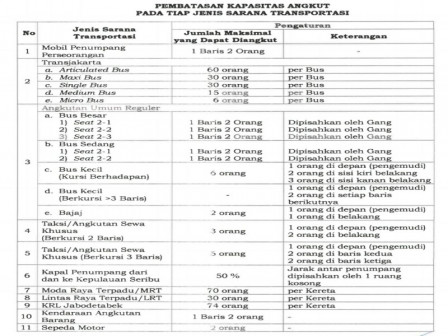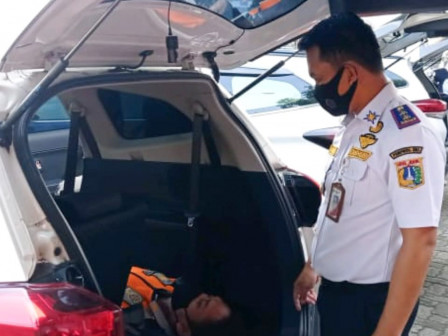Dishub Sets Technical Guides for Limiting Transport Mode Capacity and Operating Hours During Emergency PPKM
Reported by Aldi Geri Lumban Tobing | Translated by Maria Inggita
In order to support Emergency Public Activity Restrictions (PPKM) implementation in Jakarta, Transportation Agency has established provisions in transportation sector. It was mentioned in Jakarta Transportation Agency Head's Decree No. 259/2021 concerning Technical Guidelines for Limiting Transport Capacity and Operating Hours During COVID-19 Emergency Public Activity Restrictions (PPKM).
Restriction on the limit of transport capacity for transportation modes used to transport people and goods
Jakarta Transportation Agency Head, Syafrin Liputo conveyed, this policy covered 6 aspects. "Restriction on the limit of transport capacity for transportation modes used to transport people and goods, limiting public transportation's operating hours, limiting public transportation infrastructure's operating hours, regulating online motorcycle taxis and conventional motorcycle taxis operational, controlling people's mobility by prioritizing the use of bicycle and walking, and protecting passengers, crews, and transportation facilities," he said, as quoted from Jakarta PPID Press Release.
Furthermore, limitation on passengers capacity of transportation modes for people and goods mobility is done by limiting transport capacity by maximum 50 percent for every types of transport modes.
36 East Jakarta Transportation Sub-agency Personnel Assist in Blocking Vehicles in Border AreasMeanwhile, here is information regarding limitation on public transportation's operating hours:
a. Transjakarta: 05:00 - 20:30
b. Regular Public Transport in Routes: 05:00 - 20:30
c. MRT: 06:00 - 20:30
d. LRT: 05:30 - 20:00
e. Water Transport: 05:00 - 18:00
f. Night Transport/Health Workers Transport: 20:31 - 21:30
g. KRL Jabodetabek: According to KRL operational pattern
Limiting operating hours of public transportation and its supporting facilities, such as city bus terminal, MRT station, LRT station, regional and local feeder piers/ports, and bus stops will adjust with public transport operational regulations.
Meanwhile, online and conventional motorcycle taxis are allowed to carry passengers but with strict health protocol. In addition, online and conventional motorcycle taxi drivers are prohibited to make a crowd with more than 5 people. While waiting for passengers, they must maintain safety distance between drivers and parking between motorbikes minimum 1 meter. Ride-hailing companies are required to apply Geo-fencing Information Technology to prevent drivers from crowding and apply sanction to drivers who violate.
Next, controlling people's mobility by prioritizing the use of bicycle and walking as transportation modes is carried out by:
a. Requiring every office and shopping center to provide:
1) Bicycle parking facility 10% of available parking capacity
2) Bicycle parking must be located near the main entrance of the building, given a special sign for bicycle parking and equipped with directional signs.
3) Shower facility for bicycle users
b. Providing special bicycle parking facilities at Transjakarta BRT bus stops, bus terminals, train stations, piers/ports, and airports that have been adjusted to availability space in each locations and given special sign for bicycle parking, as well as equipped with directional signs.
Protection for passengers, crews, and transportation facilities becomes operator's responsibility which can be done by providing hand sanitizer, equipped personal protective equipment (PPE) at least in form of masks for employees and crews, as well as disinfecting transportation facilities before and after operating.





